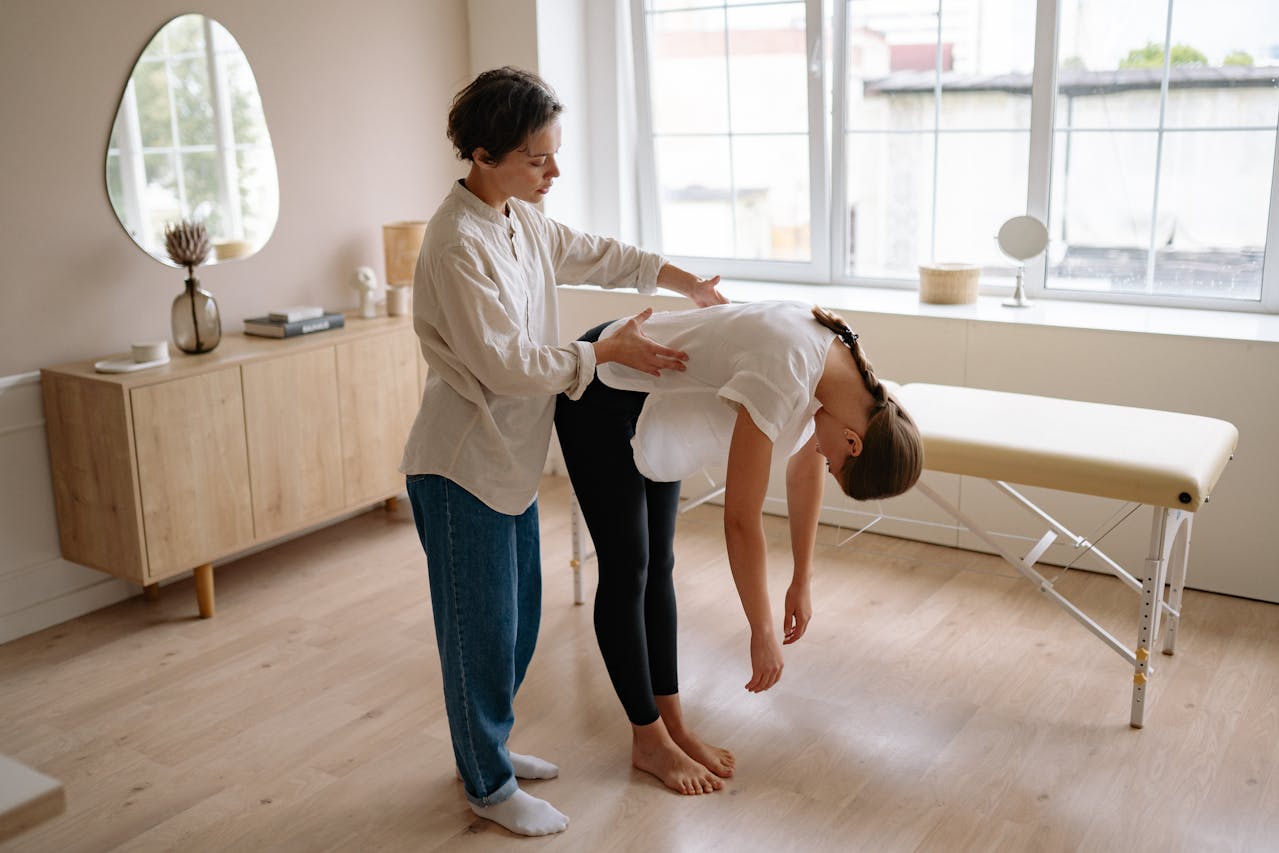
Join 130k subscribers and get the best of the week, straight to your inbox.
Pelvic floor muscle spasms can hit when you least expect them. These twitches and uncontrolled muscle movements make everyday things uncomfortable.
And because these muscles control so much, i.e., your bladder, sexual function, and bodily balance, spasms there can throw your whole day off.
If your pelvic muscles sometimes act unhinged and you don’t know what causes that or how to stop it, I’ve got you. Today, I’ll explain how to stop pelvic floor muscle spasms and take back control, without necessarily seeking medical attention.
Stick around a little longer and let’s learn more about our bodies that keep surprising us in ways beyond our comprehension.
What Causes Pelvic Floor Muscle Spasms?

Pelvic floor muscle spasms are squeezes of muscles at the base of your pelvis that feel like a sharp pinch or a flutter. A spasm is any muscle’s SOS, which signals that something is irritating, overworking, or confusing the nerves.
Here are some common triggers for pelvic floor spasms:
- Overuse of these muscles via heavy lifting
- Muscle weakness
- Chronic stress and breath holding
- Pregnancy and childbirth strain
- Pelvic or abdominal surgery scars
- Long-term constipation or straining
- Hours of poor sitting posture
- High-impact workouts without recovery
- Pelvic infection or inflammation
- Nerve irritation
How to Stop Pelvic Floor Muscle Spasms?

Pelvic floor muscle spasms are frustratingly unpredictable, and they can keep you on edge. But you can definitely do something about them by retraining your muscles and teaching them how to properly relax.
Here is how to stop pelvic floor muscle spasms:
Pelvic-Floor Physical Therapy
Pelvic-floor physical therapy is one of the best ways to treat pelvic floor muscle spasms. These specialists understand exactly how your muscles behave when things are out of control and help fix it. During pelvic floor therapy, the therapist will carefully assess your muscle tension by using gentle internal and external massage techniques that directly target those tense spots. The pressing will be precise but not uncomfortable or scary.
After the assessment, the therapist will guide you to consciously relax those muscles yourself. They may also use a technique called biofeedback, where they place little sensors on your body to display muscle activity on a monitor. This visual feedback lets you see your muscles relaxing and helps form a better brain-body connection. Regular pelvic floor therapy for spasms results in a notable reduction in pain and better bladder control.
Learn Diaphragmatic (Belly) Breathing and Reverse-Kegels
Another one of the best pelvic floor relaxation techniques is diaphragmatic breathing, also called belly breathing. In belly breathing, you fully engage your diaphragm, i.e., the main breathing muscle beneath your lungs, which doesn’t happen in shallow breathing.
Loved this reflection?
Join The Now Edit — my weekly letter for women reimagining how they live, work, and show up in the world.
Soulful storytelling. Gentle Strategy. Real Tranformation.
By signing up, you’re agreeing with our terms and conditions.
If you want to try diaphragmatic breathing, lie comfortably on your back, place one hand on your belly, and take slow, deep breaths. As you inhale, let your belly rise naturally, as this movement tells your pelvic floor muscles to relax and gently lengthen.
You can also combine belly breathing with reverse Kegels to amplify its relaxation effect. A reverse Kegel is essentially the opposite of a Kegel. So instead of tightening, you focus on softly releasing your pelvic muscles during each inhale. Reverse kegels teach you your pelvic floor muscles to let go rather than clenching, which happens in kegels. Practice this exercise for pelvic floor muscle spasms 3–4 times a day for a few minutes, you’ll notice improvements like fewer spasms and less tension within a few weeks.
Soak in a Warm Bath or Use a Heating Pad

Heat therapy works for pelvic spasms because warmth relaxes tight muscles by boosting blood circulation. This elevated blood flow means oxygen-rich blood reaches cramped muscles and helps them loosen and heal faster.
If you’re getting spasms in the pelvic floor, run a comfortably warm (not hot!) bath and soak for about 15 to 20 minutes. Don’t add fancy bath salts in this one, plain warm water does the trick perfectly. Its gentle warmth will deeply relax your pelvic muscles and provide noticeable relief when you’re having a hard time with the twitches.
You can also use a heating pad for this purpose by lying down and placing the pad comfortably over your lower abdomen or pelvic area. Keep it there for 15 to 20 minutes and make sure the temperature feels soothing, not too hot. The steady heat will reduce muscle tightness and prove to be super handy during painful flare-ups because warmth calms nerves and signals muscles to relax.
Do Gentle Hip-Opening Stretches
Stretching that targets your hips is among some effective tips to reduce pelvic muscle spasms. Tight hip muscles impact your pelvic floor as they’re closely connected. So when your hips get tense, they pull on your pelvic floor muscles, causing spasms. This is why stretching your hips regularly can ease tension and prevent spasms.
The simplest stretch you can try to control pelvic spasms is the happy baby pose. You lie comfortably on your back, bring your knees towards your chest, and grab your feet or ankles. Move the knees apart, comfortably open your hips, and hold this stretch for around 60 seconds while breathing deeply.
Another stretch to try is the child’s pose, where you kneel on the floor and sit back on your heels. Then, slowly lean forward and extend your arms in front of you as you lower your forehead to the floor. Spread your knees slightly wider for a deeper stretch and hold gently for about a minute while breathing deeply. This pose opens up your hips and lengthens your pelvic floor muscles to relieve tension.
Keep Bowels Moving Easily
How smoothly things move in the bathroom impacts your pelvic health. For example, when you strain on the toilet, you unintentionally clench and tighten your pelvic floor muscles, which increases the likelihood of spasms. Therefore, always aim to keep your bowel movements regular and strain-free.
A few tips to live by are drinking enough water throughout the day, including fiber-rich foods like fruits, vegetables, and whole grains in your diet. A Redditor shared that she has been to multiple specialists for her pelvic spasms, but since she has chronic constipation, they always come back. So take it as a sign to eat more fiber-rich foods and stay hydrated.
Lower Daily Stress

Your pelvic floor muscles are highly sensitive to stress, so if you cannot figure out how to stop pelvic floor muscle spasms, start by lowering your stress levels. When you’re feeling anxious, rushed, or overwhelmed, your body instinctively tightens certain muscles, and your pelvic muscles often take the hit. Such constant tension from stress becomes a habit and results in muscle spasms or discomfort with time. Besides, a calm nervous system is non-negotiable if you want physical and mental health.
A few simple ways to lower stress are deep breathing for a few minutes each day, taking calming walks, and listening to relaxing music. Meditation is a more powerful way to cut stress-related pelvic floor tension. Set aside 5-10 quiet minutes each day to focus on your breath and break the cycle of constant stress, which then translates into other health issues.
Take Charge of Your Health
Pelvic floor muscle spasms can be your body’s way of alerting you to underlying tension or weakness. Rather than ignoring these signals, take charge of your musculoskeletal health and start actively caring for your pelvic floor. Easy daily habits like gentle stretches, stress relief, and better bowel habits can set you up for improved mobility and reliable bladder control down the road. Your pelvic floor is a key part of your body’s foundation, and giving it consistent attention now can save you from bigger problems later.
Suggested Reads:
FAQs
Are pelvic floor spasms the same as cramps?
Not exactly. Pelvic floor spasms are quick muscle contractions that feel like tightness, twitching, or pressure in your pelvis. However, cramps last longer, feel more continuous, and are also painful.
What foods should I avoid if I feel pelvic muscle spasms?
Limit foods that cause constipation or bladder irritation, as these can trigger spasms. Common culprits include spicy foods, caffeine, alcohol, sugary drinks, and processed foods. Instead, stick to fiber-rich fruits, vegetables, and plenty of water.
Can sitting for too long cause pelvic floor muscle spasms?
Yes, sitting for extended periods tightens and shortens pelvic muscles, which then causes spasms. If you have to sit for long hours, regularly standing up, stretching, or taking short walking breaks every hour can help keep this issue at bay.
Zakia Lott
More Like This:








